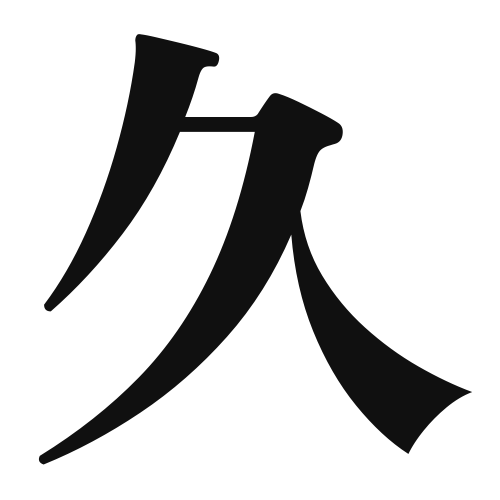1. Overview of Meaning
The kanji “久” (pronounced “kyuu” or “hisashi”) means “long time” or “eternity.” It conveys the idea of something lasting for a long duration or being enduring.
2. Formation and Radical
Formation of the Kanji: The kanji “久” is classified as a pictogram, representing the concept of time passing. It visually suggests the idea of something that has been around for a long time.
Radical: The radical for “久” is also “久,” which is used in other kanji related to time and duration.
3. Examples of Usage
Common Words and Phrases:
- 久しぶり (hisashiburi) – “long time no see”
- 永久 (eikyuu) – “eternity”
Example Sentences in Daily Conversation:
- 久しぶりですね!(Hisashiburi desu ne!) – “It’s been a long time, hasn’t it!”
- 彼は久しぶりに帰ってきた。(Kare wa hisashiburi ni kaette kita.) – “He came back after a long time.”
4. Synonyms and Antonyms
Similar Kanji:
- 長 (naga) – “long,” which refers to length but does not specifically imply time.
- 持続 (jizoku) – “continuation,” which emphasizes the act of continuing rather than the duration itself.
Antonyms:
- 短 (tan) – “short,” which indicates a brief duration or length.
5. Cultural and Historical Background
Relation to Japanese Culture: The concept of “久” is significant in Japanese culture, often associated with the appreciation of long-lasting relationships and traditions.
Proverbs and Idioms:
- 久しきは美しき (Hisashiki wa uruwashiki) – “What is long-lasting is beautiful,” emphasizing the value of enduring qualities.
